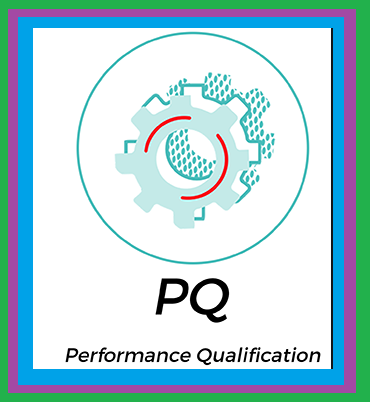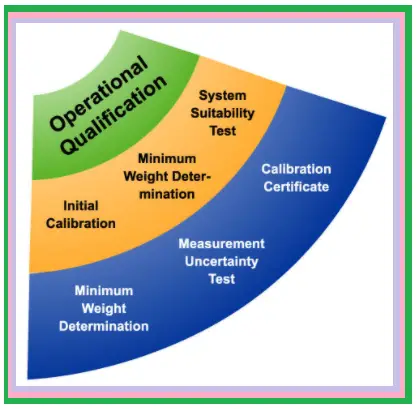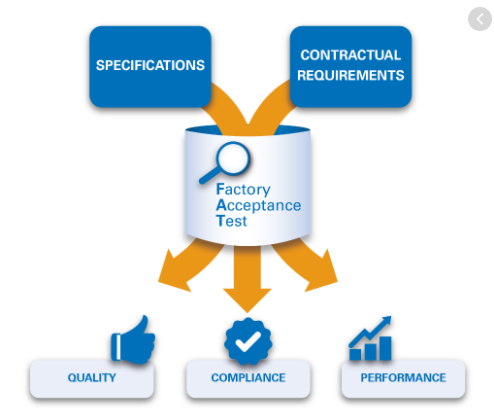PERFORMANCE QUALIFICATION FOR TABLET COMPRESSION
TABLE OF CONTENTS
| 1.0 | Approval | ||
| 2.0 | Objective | ||
| 3.0 | Responsibility | ||
| 4.0 | System Description | ||
| 4.1 | Equipment Identification | ||
| 4.2 | Description of Operation | ||
| 4.3 | Standard Operating Procedure Established During Operation Qualification | ||
| 5.0 | Validation Plan and Methodology | ||
| 6.0 | Performance Qualification Procedure | ||
| 6.1 | Effect of Machine Speed | ||
| 6.2 | Effect of Powder Level in Hopper | ||
| 6.3 | Effect of Pre Compression Pressure | ||
| 6.4 | Effect of Tablet Thickness | ||
| 7.0 | Deviation and Corrective Action | ||
| 8.0 | Change Control Proposal | ||
| 9.0 | Re-validation Criteria | ||
| 10.0 | Acceptance Criteria | ||
| 11.0 | Result and Evaluation | ||
| 12.0 | Conclusion | ||
| 13.0 | Appendix | ||
| 13.1 | Abbreviations | ||
| 13.2 | Reference | ||
| 13.3 | Annexure | ||
1.0 Approval
| Prepared By | Signature | Date |
| [Officer Production] |
| Checked By | Signature | Date |
| Executive – QA | ||
| Manager – Engineering | ||
| Manager – Production] |
| Authorized By | Signature | Date |
| GM – Formulations | ||
| Head – Quality Assurance |
2.0 Objective:
Objective of this protocol is to collect sufficient data to establish that Tablet Compression B4 Type 35 Stn. “B” Tooling Tab, Machine, supplied by FALCON. performs to meet the desired Product Quality in consistent manner, when operated as per Standard Operating Procedure.
Performance Qualification Protocol shall provide the Methodology of qualification studies, formats for recording the observation, Criteria of Qualification and a guideline for documentation of the study.
3.0 Responsibility:
The validation group comprising of a representative from each of the following departments shall be responsible for the overall compliance with this protocol:
- Production Department
- Quality Assurance Department
- Quality Control Department
The Production department shall be responsible for checking the operations and recording data as per the procedures outlined in the data sheets of this protocol. The Quality control department shall be responsible for testing of samples wherever required.
The Protocol of Performance qualification shall be initiated and Checked by Production Department. The report shall be finally authorized by general manager and head quality assurance.
4.0 System Description:
The major components of the equipment are identified us:-
- Powder Feeding unit.
- Powder transfer unit
- Compression unit
- Hydraulic power pack assembly
- Discharge unit
- Lubrication unit
The Tablet Compression B4 Type 35 Stn. “B” Tooling Tab, Machine, supplied by FALCON., a double rotary high speed tablet press, is a machine in incorporated with the force-feeding arrangement, auto-lubrication, electromagnetic clutch, power level sensor and rejection / sampling port.
Powder feeding unit has S.S. 316 Hopper of capacity 16 Ltrs. rests on top of the machine which holds the powder in it and delivers to the feeding assembly through a butterfly valve which control the flow of the powder between the hopper and the feeding assembly. The hopper consists of an agitator, which enhanced the powder flow. A barrel –type powder level sensor is mounted on a bracket and fixed against the sight glass of the hopper.
Powder transfer unit Consists S.S. 316 inlet connector, which links the hopper and the force feeder, the force feeder has two counter rotating paddles of S.S. 316, driven by reduction gearbox and variable frequency AC drive motor. The tail over die is an essential feature of the high – speed tablet press. The function of the tail over die is to keep the filled die covered until the last moment before the upper punch enters the die.
Drive unit has main motor of 5HP drives a very high reduction gearbox unit using an electromagnetic clutch and a timing belt. The gearbox unit consists of a Phosphorus bronze worm wheel and a worm shaft. Turret is a three piece structure having the center die tablet of S.S. 316 and upper and lower piece of cast iron of SG 400/15. The upper piece holds the upper punches, which rests on the upper cam tracks with the cam plate. Similarly, the lower piece holds the lower punches that travel on the lower cam tracks and Dozer.
Compression unit comprises upper main pressure roll assembly having a roll centre, pressure roll and pressure roll pin. The roll centre holds the pressure roll and is locked by using external circlips upper punch penetration assembly is responsible for the entry height of the upper punch in the die. Tablet thickness assembly is responsible in deciding the tablet thickness.
Weight dozer assembly is responsible for adjusting the weight of the tablet by varying the depth of fill. The depth of fill is adjusted by the upward and downward movement of the weight adjusting head through a dozer adjusting screw with the help of dial.
Hydraulic power pack assembly system control the safety overload mechanism, which governs the maximum pressure, level, at which particular tablets are being made. The oil reservoir for this system is located in front LH corner within lower cabinet. It can be accessed by removing the lower side guard (LH). The oil level in the reservoir should be checked regularly through the oil level indicator.
Tablet discharge unit comprises of ejection cam, tablet scrapper assembly & tablet discharge chute. The height of the ejection cam needs to be set in such a way that the tip of the lower punch is slightly above the die so as to avoid tablet-chipping problem. As soon as the tablet is ejected out it strikes the tablet scrapper assembly, which directs the tablet to the discharge chute. Tablet discharge chute is made S.S. 316 with acrylic cover. Tablets slide out through this chute to the container.
Auto lubrication system provided for the lubrication of all critical pinpoints like roll pins, it comprises of a lubrication tank, a motorized pump, distribution manifold and pipelines. This pump operates on timer set in the PLC. It should be noted that the ON time should be less then the OFF time, to prevent the oil flooding. The dozing of oil respective critical points can be throttled through the distribution manifold.
Lower punch lubrication system helps mainly for smooth and easy ejection of tablets. In addition the tablet gets a clean, smooth surface at the web. The lower punch has an extractor groove below the tip for the lubrication support, which may be a lubrication felt or woolen thread winding. In order to avoid lubricant, the scraper mechanism is built in. the stripper oil is collected in a collecting tray. The scraper keeps the external diameter of the die plate and lower punch guide clean. From the collecting tray the oil is transported downward through a funnel and a hose line and returned back into the tank.
The working principle of compaction force control is whenever the powder is compressed to from a tablet an impact is generated. The oil in the hydraulic cylinder absorbs this impact. The load cell, which is mounted between the upper roll lever and the hydraulic cylinder, senses the load received. The value is transferred to the data control screen through the MP55 transducer and the PLC. The data control screen displays the individual force of all the punches.
4.1 Equipment Identification
The subjected equipment is identified as Tablet Compression Machine
| The Equipment is identified as | : | Tablet Compression Machine. |
| Model No. | : | B4 TYPE |
| Serial No. | : | FM-15-117 |
| Tag No. | : | |
| Name of the Supplier | : | FALCON, AHMEDABAD, INDIA |
| Purchase Order Number / Date | : |
4.2 Description of Operation:
Tablet compression machine is used to fill a required amount of powder granules containing uniformly distributed active ingredient in an adjustable die cavity, finally being compressed by means of upper and lower punch force to get ejected from scrapper plate.
4.3 Standard Operating Procedure established during Operation Qualification
Title: Operation of Tablet Compression Machine (Equipment ID No.: – _______________) SOP No.: _________________________________
5.0 Validation Plan and Methodology
Performance of the Tablet Compression Machine shall be tested at extreme and optimum operation conditions, which are identified as Critical Process Variables.
Critical Process Variables are:
- Machine Speed (RPM)
- Percentage Occupancy of powder level in hopper
- Pre Compression force
Equipment Performance Qualification shall be carried out, simulating actual production conditions and varying minimum and maximum critical process variable conditions. No Pharmaceutical Active Ingredients shall be used for the qualification purpose. Excipients used for manufacturing of routine products using Compression method shall be used for the study.
| Standard Test Procedures Reference No.: · Dispensing of Raw Materials: SOP No._______________________ · Operation of Tablet Compression Machine (EQ. ID No. __________________) SOP No: PO-SP-019-R00 |
Dispensing, sifting and blending of the raw material and finally compression of the blended powder shall be done as per the respective Standard Operating Procedure. Physical characters of the powder blend (i.e. Bulk Density, tap Density, Compressibility ratio and particle size analysis) are to be recorded from three different layers of blend, unloaded from blender to ensure the physical uniformity.
| · Standard Operating Procedures Reference No.: · Dispensing of Raw materials : _________________________ · Operation of Rapid Mixer Granulator (Eq.No____________) SOP No: _________ · Operation of Tablet Compression Machine (Eq.No____________)SOP No: _____________ · Operation of Bin Blender (Eq.No___________) SOP No: ____________ · Operation of Tablet Compression Machine: (Eq.No__________)SOP No: __________ |
Machine setting for die, punch, tablet thickness shall be done as per the instruction of Batch Production Record. Embossed punch shall be used for the qualification study, as a worst case consideration.
In process testing shall be carried out for verification of physical appearance (Sticking, picking, capping, mottling), shape, embossing/engraving. Tablet thickness, diameter, hardness, friability and weight variation against the Tablet Specification[Disintegration test and Dissolution test shall not be done because these parameters are related to process efficiency and not directly related to Equipment Performance]. Test method for in process testing shall be carried out as per the following General Test Procedure. Result of the in process test shall be recorded in the prescribed format of the Batch Production Record.
Validation Plan is described in the following Matrix.
| Process Variable | Parameter selected for qualification | Number of trials | Number of tablets to be compressed | Quality Parameters to be tested | Sampling frequency |
| RPM of the Machine | 5 | 01 | 5000 | a. Weight variation b. Hardness c. Thickness d. Friability | 3 set of sample containing 50 tablets in each trial (Total: 50´3=150 Tablets) |
| 15 | 01 | 5000 | |||
| 25 | 01 | 5000 | |||
| % occupancy of powder in the hopper | 20% | 01 | 5000 | a. Weight variation | 3 set of sample containing 50 tablets in each trial (Total: 50´3=150 Tablets) |
| 50% | 01 | 5000 | |||
| 80% | 01 | 5000 | |||
| Pre-compression pressure | Nil | 01 | 5000 | a. Hardness b. Thickness | 3 set of sample containing 50 tablets in each trial (Total: 50´3=150 Tablets) |
| Optimum | 01 | 5000 | |||
| Maximum | 01 | 5000 |
6.0 Performance Qualification Procedure:
Test Data Sheet
Date: …………….. Time: ……………..
6.1 Effect of Machine Speed.
| Machine Speed (RPM) | Trial | Weight Variation | Friability (% w/w) | Hardness (Kg/cm2) | Thickness (mm) | |
| Wt. of 20 Tablets (gm) | Individual* (mg) | |||||
| NMT ±2% of target weight | NMT ±5% of target weight | NMT 1% | NLT 2.0 Kg | To monitor | ||
| 5 | Sample #1 | |||||
| Sample #2 | ||||||
| Sample #3 | ||||||
| 15 | Sample #1 | |||||
| Sample #2 | ||||||
| Sample #3 | ||||||
| 25 | Sample #1 | |||||
| Sample #2 | ||||||
| Sample #3 | ||||||
Remarks (if any):
| Data Entered By: | __________________ | _________________ | _____________ |
| [Name] | [Signature] | [Date] | |
| Verified By: | __________________ | _________________ | _____________ |
| [Name] | [Signature] | [Date] |
Test Data Sheet
Date: …………….. Time: ……………..
6.2 Effect of powder level in hopper.
| % occupancy of powder level in hopper | Trail | Weight Variation | |
| Wt. of 20 Tablets (gm) | Individual (mg) | ||
| NMT ±2% of target weight | NMT ±5% of target weight | ||
| 20 % | Sample #1 | ||
| Sample #2 | |||
| Sample #3 | |||
| 50 % | Sample #1 | ||
| Sample #2 | |||
| Sample #3 | |||
| 80 % | Sample #1 | ||
| Sample #2 | |||
| Sample #3 | |||
Remarks (if any):
| Data Entered By: | __________________ | _________________ | _____________ |
| [Name] | [Signature] | [Date] | |
| Verified By: | __________________ | _________________ | _____________ |
| [Name] | [Signature] | [Date] |
Test Data Sheet
Date: …………….. Time: ……………..
6.3 Effect of Pre Compression Pressure.
| Pre compression Pressure | Trail | Hardness(Kg/cm2) | Thickness(mm) |
| NLT 2.0 Kg/cm2 | To monitor | ||
| Nil | Sample #1 | ||
| Sample #2 | |||
| Sample #3 | |||
| Optimum | Sample #1 | ||
| Sample #2 | |||
| Sample #3 | |||
| Maximum | Sample #1 | ||
| Sample #2 | |||
| Sample #3 |
Remarks (if any):
| Data Entered By: | __________________ | _________________ | _____________ |
| [Name] | [Signature] | [Date] | |
| Verified By: | __________________ | _________________ | _____________ |
| [Name] | [Signature] | [Date] |
Test Data Sheet
Date: …………….. Time: ……………..
6.4 Effect of Tablet Thickness.
| S. No.
| Average wt. (mg) | Thickness of Tablets (In mm.) | Hardness of Tablets ( Kg. / Cm2 ) | Friability (In %) |
| 1. | ||||
| 2. | ||||
| 3. | ||||
Remarks (if any):
| Data Entered By: | __________________ | _________________ | _____________ |
| [Name] | [Signature] | [Date] | |
| Verified By: | __________________ | _________________ | _____________ |
| [Name] | [Signature] | [Date] |
7.0 Deviation and Corrective Action
Description of deviation and date observed
Person responsible for corrective action and date assigned
Corrective action taken and date conducted
Checked by: __________________ Date: ____________________
Verified by: ___________________ Date: ____________________
8.0 Change Control Proposal
| Sr. | Change Observed / Made | Reason | Verified By (Production) Sign & Date | Approved By (Q.A.) Sign & Date |
9.0 Re-Validation Criteria
Performance Qualification of Tablet Compression Machine to be Re-Validated on:
- Substitution of existing Tablet Compression Machine with a new Tablet Compression Machine.
- Replacement of existing instrument / component with a new one, which can have a direct impact on the performance of the Tablet Compression Machine.
- Any major modification to the existing Tablet Compression Machine which can effect the performance of the equipment.
- If the Tablet Compression Machine is found to be malfunctioning during performance qualification.
10.0 Acceptance Criteria
- Average weight variation of tablets should not be more than ±2% of target weight and individual weight variation should not be more than ±5% of target weight.
- Hardness of tablets should not be less 2.0 Kg/cm2.
- Friability should not be more than 1%.
- Relative Standard Deviation between the results of any test parameters should not be more than 5%.
11.0 Evaluation of Result:
Results shall be documented in Test Data Sheets based on the observations recorded during Performance Qualification. Evaluation of results shall be carried out by finalising the operational range of equipment for processing of products.
From all the results it was observed that all test parameters complied the acceptance criteria and hence established the desired performance of Tablet Compression Machine.
- Tablet Compression Machine can be operated in a working capacity of 25% to 75% load using machine speed 5, 15 & 25 rpm.
- All test results meeting the Acceptance Criteria was established the satisfactory performance of Tablet Compression Machine when operated as per SOP.
12.0 Conclusion:
On the basis of evaluation of results it can be concluded that the Tablet Compression Machine , supplied by M/s Falcon. is adequate to provide the desired quality parameters in consistent manner.
13.0 Appendix
13.1 Abbreviations
| Min – Minute |
| No. – Number |
| Pvt. – Private |
| Ltd. – Limited |
| RPM. – Rotation per Minutes |
| PQ – Performance Qualification |
| S.S. – Stainless Steel |
| SOP – Standard Operating Procedure |
| Kg/cm². – Kilogram per centimeter square |
| Wt. – Weight |
| PLC – Programmable Logic Control |
| mg. – Milligram |
| NLT – Not less then |
| NMT – Not More then |
| mm. – Millimeter |
| w/w. – Weight by weight |
| QA – Quality Assurance |
13.2 References
13.2.1 Protocol Format and style guide – FDA guidelines
13.3 Annexure
13.3.1 Q.C. Test report





